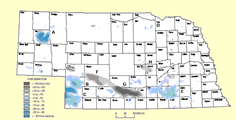Natural Resources, School of

Conservation and Survey Division: Faculty and Staff Publications
Document Type
Article
Date of this Version
2014
Citation
Turk, J.K., and R.C. Graham. 2014. Analysis of vesicular porosity in soils using high-resolution X-ray computed tomography. Soil Science Society of America Journal 78: 868-880.
Abstract
Vesicular horizons are common at the surface of arid and semiarid soils and play a critical role in regulating infiltration. Most methods for examining pore morphology in the vesicular horizon involve physical sectioning of the sample and individual measurement of pores, which is time-consuming and provides an incomplete view of the pores. The objectives of this study were to (i) develop methods for the classification and characterization of pores in the vesicular horizon using high resolution X-ray computed tomography (HRXCT) and (ii) use these methods to examine the distribution of pores within vesic-ular peds. Three intact peds were scanned by HRXCT and examined using Blob3D software. A subset of pores from the first scan were observed and used to develop a classification tree model based on quantitative parameters of pore shape. Five major pore classes were found: equant vesicles, non-equant vesicles, individual vughs, connected vughs, and planar voids. All pore types decreased in size with increasing depth in the samples; however, the trend in quantity of pores with depth varied between pore types. In the ped with the least vesicular porosity, there was an increase in size and decrease in number of all pore types between the ped interior and exterior, a pattern which was reduced in the peds that were more dominantly vesicular. The application of HRXCT in this study shows how pore shape and size can be quantified within the vesicular horizon and reveals considerable variation of these characteristics within and between peds.


Comments
RS-3175